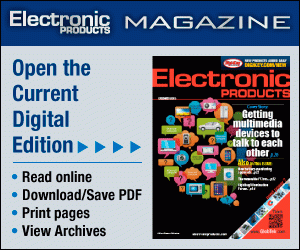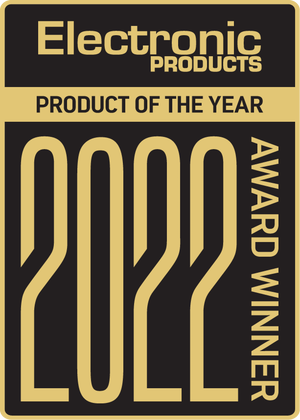At SID '95:
AMLCDs reach critical mass
Driven by the portable computing market, falling prices could soon push
active-matrix LCDs into everyday applications
Although all the various flat-panel display technologies continue to improve,
active-matrix LCDs in particular are becoming strong contenders for many CRT
applications. However, ongoing improvements in gun design and screen coatings
ensure the CRT's viability for some time to come.
While flat-panel displays (FPDs) in general continue to make inroads into CRT
strongholds, product showings at the recent Society for Information Display
(SID) Show in Orlando, FL, evince a surge in active-matrix liquid-crystal
display (AMLCD) production in particular. However, improvements in gun design
and screen coatings are helping CRTs maintain their market share in all but the
most rugged and space-conscious applications.
According to figures just published by Stanford Resources, Inc., a
high-technology research firm, FPDs are expected to take 41% of the $27.9
billion display market in 1995, leaving the CRT with 59%. However, FPDs are
taking an ever-increasing share of the market and by the year 2,000 they are
expected to share the market in a 50-50 split with CRTs. By then, the worldwide
market should have grown to $42.9 billion.
Broken down, the 1995 FPD market is divided almost equally among passive LCDs
and AMLCDs, except for a relatively small share, $1.5 billion, going to the
remaining FPD technologies. These include plasma, electroluminescent, LED,
vacuum fluorescent, and field-emitter display (FED). As the latest technology,
FED received quite a bit of interest at SID, with PixTech, Inc. (Montpellier,
France) showing high-quality color images on 640 x 480 FED. The company expects
to be shipping viable product by the end of this year, if not sooner.
Although it was not showing product at SID, Raytheon (Quincy, MA) expects to
have a 4 x 4-in., 512-pixel2 monochrome FED available by next
month. This is to be followed by a 6-in.2 version in December or
early January. The monochrome display, with contrast filtering, has a
brightness of 350 fL and is targeted initially at avionics applications.
While FEDs slowly emerge from the labs, the already-well-established AMLCD
technologies approach the critical mass necessary to take them out of the high
end and into mainstream markets. Such is the popularity of AMLCDs that even
makers of competing FPDs are jumping on the bandwagon.
Fujitsu Microelectronics, Inc. (San Jose, CA), fresh from successfully reaching
mass production of its 21-in.plasma display, confirmed at SID that it will
begin marketing color TFT AMLCD modules and projector systems within the U.S.
According to Joe Virginia, FPD marketing manager at Fujitsu, “Fujitsu
recognizes that the needs of various markets cannot be served by a single
flat-panel technology.” Consequently, the company's focus is to produce only
those FPD technologies that are clearly capable of achieving full-color,
high-resolution, large-screen sizes. The company's initial offering includes
six 10.4-in. VGA modules for both portable and non-portable applications. The
devices range from 3 to 6-bit color with power dissipations of 14 to 7.2 W,
respectively. Prices range from $1,400 to $1,600 each.
Fujitsu will continue development of its plasma line with plans to reduce the
dot pitch from its present 0.35 mm to 0.11 mm within 3 years and to jump from
6-bit to 8-bit color within 2 yrs.
Mitsubishi Electronics America, Inc. (Sunnyvale, CA), also a relative newcomer
to AMLCDs, announced its AngleView line of color TFT LCDs for notebooks,
subnotebooks, and workstations. According to Dale Maunu, senior marketing
manager for FPDs at Mitsubishi, “Demand for TFT LCDs is expected to grow
rapidly over the next few years due to an increasing demand for rich color
visuals, including full-motion video in multimedia applications.”
To cater to this market, the company plans to reduce glass and panel thickness
from 1.1 and 10 mm to 0.7 and 8 mm, respectively, and to reduce power
dissipation from 3.5 W to 2.0 W. In addition, its 11.3-in.displays will come
in a package of equal height and width as present 10.4-in.offerings.
Other AMLCD announcements at SID include an 11.3-in. SVGA display for notebooks
(see Fig. 1) from Sharp Electronics Corp. (Camas, WA), sampling at $1,476 each;
four 1.3-in., color and monochrome, p-Si TFT displays (see Fig. 2) for consumer
applications, from Epson America, Inc. (Torrance, CA), from $735: and three TFT
LCDs from NEC Electronics Inc. (Mountain View, CA) ranging in size from
10.2-in. VGA to 12.1-in. XGA and in price from $1,600 to $3,900.
Standardizing FPD interfaces
With a plethora of FPDs set to hit the market, some standardized format for
interfacing to these devices becomes increasingly desirable if frustration for
integrators and cost for end users is to be kept to a minimum. To this end,
VESA announced at SID the final review of the first phase of its Flat Panel
Display Interface (FPDI). According to Mark Williamson, chairman of VESA's FPDI
committee and an electrical engineer with NIST, “Worldwide manufacturers of
computers, FPDs, graphics controllers, semiconductors, connectors, and cables
have come together in a cooperative effort to resolve these problems and to
develop the next generation of advanced FPD interface standards.”
The first phase provides standardized signal names and timing power sequencing
requirements, as well as a standard connector interface design, a glossary of
terms, and a panel data format definition. Display types covered include VGA
passive LCDs, VGA AMLCDs up to 18-bit color, SVGA color (dual-scan only), and
SVGA AMLCDs with 12- and 18-bit color. The standard is posted for free
downloading on the World Wide Web at www.vesa.org.
Although FPDs continue to improve in leaps and bounds, they have yet to
encroach on one of the CRT's last remaining strongholds–the home desktop
market. It is here, where low cost is essential, that the CRT rules. However,
within the realm of office desktop applications, the CRT may find itself bumped
aside. With the rising cost per square foot of office space, companies are
finding out that the huge volume of space occupied by large-screen CRTs is just
not feasible. Hence, predicts Charles McLaughlin, consultant with O'Mara &
Associates (Palo Alto, CA), the killer application for FPDs will be a desktop
display on a boom that can be pulled down when needed and shoved out of the way
when not.
Despite all the predictions for FPDs, the CRT market is still on the rise as
improvements and enhancements continue to augment the device's inherent
advantages. Much of the work being carried out now focuses on the area of gun
design and screen coatings.
Toshiba America Electronic Components, Inc. (Irvine, CA) announced at SID
development of what it calls Microfilter technology that, according to Mike
Milostan, manager of CRT engineering at Toshiba, “provides a 30% improvement in
contrast and brightness over conventional display tubes.” The technology
employs a proprietary slurry coating process that, in combination with
adjustments in glass transmittance, phosphor design, and outer-coating design,
boosts contrast, brightness, and color fidelity.
The 17-in.version of the Microfilter display tube has a dot pitch of 0.26 mm,
a glass light transmission of up to 81%, resolution of up to 1,600 x 1,280, and
a horizontal frequency of up to 90 kHz, $500 each for samples. A 28-in.tube
was also shown at SID.
—Patrick Mannion
CAPTION:
Fig. 1. The 11.3-in. LQ11DS01 AMLCD from Sharp Electronics Corp.features 800 x
600 screen resolution, a power consumption of 2.7 W, and weighs 580 g.
Fig. 2. LB series p-Si active-matrix LCDs from Epson range in size from 2.5 to
5.6 in.and target consumer applications.
Advertisement





